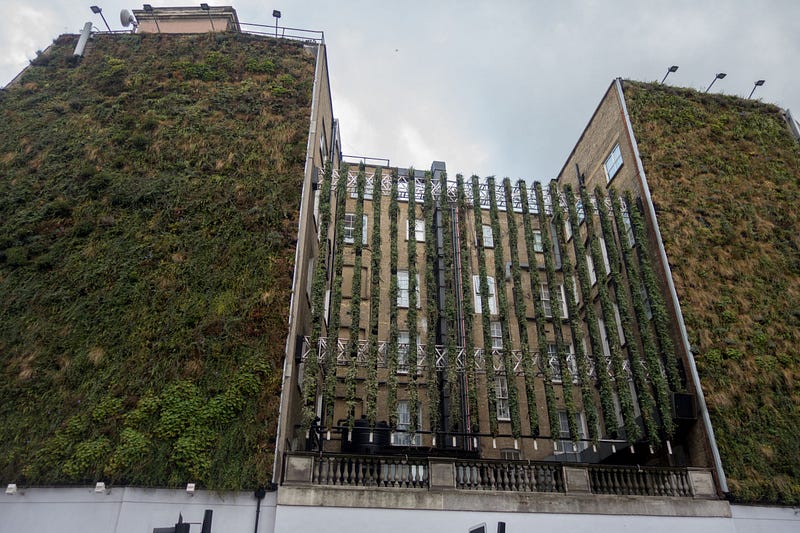A Tree Grows in Brooklyn: Can urban planning help mitigate the harmful effects of climate change?
By Sreeja Daliparthy, Computer Science/Biology, 2023

Sustainability is the buzzword of the decade. A global society that seems to be toeing the line between risk and disaster combined with an increasingly outspoken youth population preaching the dangers of excessive consumption has led companies to fight for dominion over an idealistic image of environmental ethicality. Customers are bombarded with claims of moral production practices and ethically sourced materials on a daily basis. But take the lens off of human consumerism and shift it to the simpler fact of human existence, and the implications of sustainability change.
In recent years, average annual temperatures worldwide have risen at unprecedented rates due to human activity — namely, the burning of fossil fuels, which has caused an accumulation of greenhouse gases that trap heat in the atmosphere. This trend of global warming will likely result in a host of ramifications, including rising sea levels and an increase in occurrences of natural disasters. Mitigation strategies to combat these consequences have typically been either remedial or adaptive, and in the case of urban planning, adaptation is key. According to a 2014 paper published in ISPRS Journal of Photogrammetry and Remote Sensing, urban structure is a significant contributor to the urban heat island, or UHI, which is a phenomenon causing higher atmospheric and surface temperatures in metropolitan areas. But how can we adapt cities to fit the demands of climate change if there’s barely any space to begin with?
Urban structure is a significant contributor to the urban heat island, or UHI, which is a phenomenon causing higher atmospheric and surface temperatures in metropolitan areas.
One recent focus of urban planning involves the incorporation of green space into regions with high population density and therefore high energy expenditure. At one point or another, everyone has stumbled upon a Facebook video showing off beautiful gardens that are squeezed into the tiniest of spaces. Social media influencers attend high-profile events and take photos in front of living walls, which have plants growing parallel to the ground, such as the massive wall of roses at Kim Kardashian’s wedding to Kanye West. The job of urban planners, albeit without the glitz and glamor, is to find ways to make these green spaces ubiquitous. The spatial composition and configuration of vegetation patches in urban areas has been proven to positively impact the distribution of the UHI, and depending on the size and shape of these green spaces, they can even have cooling effects on land surface temperatures in cities.
Perhaps one of the most well-known examples of successful urban planning concerning green space is the High Line. Once a disused elevated New York Central railway, the High Line was converted into a mile-long public park full of lush plant life in 2009. The park was designed with environmental sustainability in mind; the roof provides a drip irrigation system for watering, and plants are sourced locally. From the perspective of both a visitor and an urban planner, the High Line is reminiscent of the Secret Garden, where nature thrives in the unlikeliest of places.
Another important way that urban planning contributes to sustainability and thereby combats global warming is through strategic transportation methods. According to a policy focus report published by the Lincoln Institute of Land Policy, conscious urban design can reduce the number and distance of vehicle trips (which contribute about 33 percent of energy-related greenhouse gas production in the United States) by “organizing human activity in compact communities with a range of housing types, providing reliable transit to and from employment, and placing services within easy walking distance of home.”
It’s up to city officials and urban planners to design options for the public to go about their lives while doing as little harm to the environment as possible.
It’s important to acknowledge human behavior when modifying cities to alleviate the complications of climate change. People are, by nature, lazy; they seek the most convenient option. It’s up to city officials and urban planners to design options for the public to go about their lives while doing as little harm to the environment as possible. For instance, Portland, Oregon, has intentionally provided transit options that protect the farm and forest lands that surround the city. Hopefully, population growth will be accompanied by a consistent commitment to remaining sustainable.
The tendency for members of a society to congregate led to urbanization, which then lent itself to great eras of science, art, music, and more. But in today’s world, which grows hotter and hotter by the day, it is dangerous to ignore the pressing issues that the mere existence of cities creates. Establishing environmental sustainability is no small task, but with the right tools and a healthy dose of optimism, it can be accomplished. And who knows? Maybe in a few years we’ll all have flowers growing from our walls.
ISPRS Journal of Photogrammetry and Remote Sensing (2014). DOI: 10.1016/j.isprsjprs.2013.12.010.
